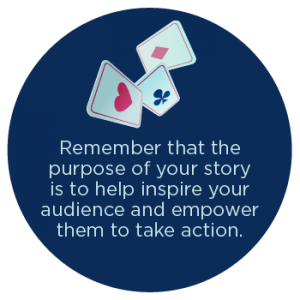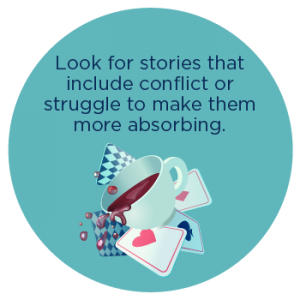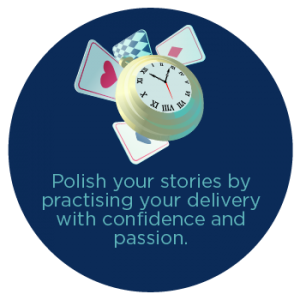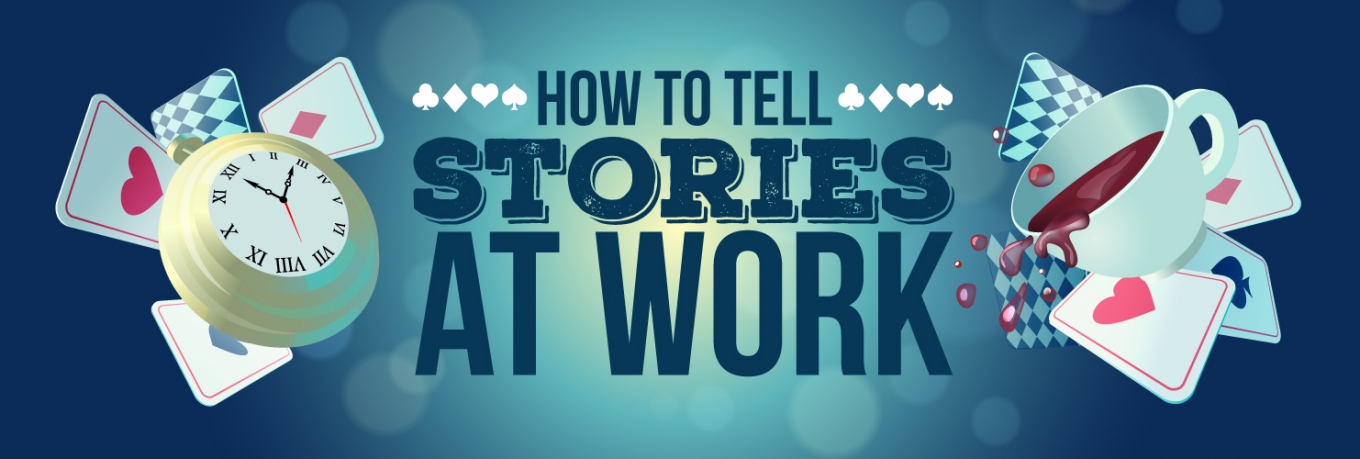There’s no doubt about it. Of all the latest leadership and communication trends, storytelling invites more than its fair share of scepticism. Telling stories at work? Really?… Yet there’s good science behind it. Research shows our brains are more active when we’re listening to stories. It even shows that our brains ‘couple up’ with the storyteller’s – temporarily mirroring their brain responses. We actually ‘feel’ the story in the same way they do.
So if storytelling is that powerful, why aren’t we doing more of it? Why aren’t our workplaces alive with stories illustrating concepts and selling ideas? What holds us back?
Perhaps it’s that storytelling – especially at work – is harder than it sounds. It takes a certain leap of faith to start telling stories in the workplace. Where do I start? What stories should I use? Will I look foolish?
Here are six tips from business storytelling experts to help address some of those nagging doubts…
Where do I find stories?
First things first. You need a clear purpose for every story. What’s the message you want to get across? Start there, then look for a story that illustrates your point.
You then have two options. Use your own personal stories, or use other people’s stories.
Using other people’s stories can be the simplest way to start increasing your storytelling at work. “Stories are everywhere,” writes Ian Harris in Hooked on You. “You just need to root them out.”
So become a story hawk. Ian suggests collecting short factual stories and keeping them in a ‘swipe file’ – either physically or online – so they’re ready for future use. “Biographies and autobiographies are particularly rich with interesting stories,” he writes. He also recommends websites like Quora and Reddit for engaging material.
What about personal stories?
Carmine Gallo, author of Talk Like Ted and The Storyteller’s Secret, notes that business professionals rarely tell personal stories – which is one reason why they make such an impact when they do.
According to Carmine, the most popular TED talks usually start with a personal story. So think about times when you’ve overcome a major challenge or learned a valuable lesson. Or reflect on when you were growing up, and the lessons you learned from your parents, grandparents or siblings. These will doubtless be experiences that many of your audience can identify with too.
When using personal stories, keep them positive and make them as rich and evocative as possible. And remember, the purpose of your story is to help inspire your audience and empower them to take action. “The stories you tell,” writes Nick Morgan in Power Cues, “should always make your followers, your audience, your listeners the heroes, not you.”
How do I structure my stories?
Popular advice has it that every story needs a beginning, a middle and an end. While that may be true, it’s not especially helpful.
Instead, take the advice of presentation expert Nancy Duarte, author of Resonate. She recommends taking a steer from Hollywood and thinking of your story as three acts: situation – complication – resolution.
In many popular films, and in classic story structures like the Hero’s Journey, this translates in simple terms as: likeable hero – encounters roadblocks – emerges transformed.
Even if the content of your story doesn’t always follow this exact pattern, the three-act approach is still an excellent framework on which to structure it.
How do I make them interesting? 
Conflict or struggle is integral to the most absorbing stories, so look for examples that include these features.
Or incorporate another key storytelling tactic: unexpectedness. According to Chip and Dan Heath in Made to Stick: “the most basic way to get someone’s attention is this: break a pattern.” Creating curiosity or intrigue is a powerful way to make your stories interesting.
As the author John LeCarré once said: “‘The cat sat on the mat’ is not the beginning of a story. ‘The cat sat on the dog’s mat’ is.”
How do I make them relevant?
Sometimes your story may not, at first, seem relevant to your message. If this is the case, finish your story with a bridge.
A bridge, explain Gabrielle Dolan and Yamini Naidu in Hooked, is “what brings your audience back to the business context”.
Ian Harris gives a helpful list of possible bridges in Hooked on You. They include:
- “I love this story because it shows…”
- “Why am I sharing this?”
- “Here’s the point.”
- “It’s the same in our industry.”
The bridge connects your story to its business relevance – allowing you to finish with your key message.
How do I polish my stories?
There’s only one solution to this – practice. Write out your story following the three-act structure, keeping it as punchy as possible.
Follow the ‘goldilocks’ principle of story development: keep the amount of detail ‘just right’ – enough to allow your listener to visualise the scene, but not so much that their interest starts to waver.
Then practise delivering your story with confidence and passion.
Storytelling, done well, can be harder than it sounds. But it can also reap significant rewards, increasing your personal impact and setting you apart from your peers.
As the Canadian author Charles de Lint so aptly put it: “Don’t forget – no one else sees the world the way you do, so no one else can tell the stories that you have to tell.”
By Dave Wraith for Alive!
















